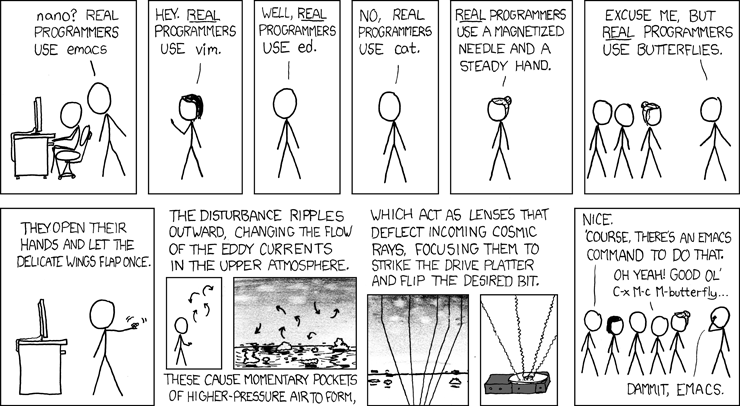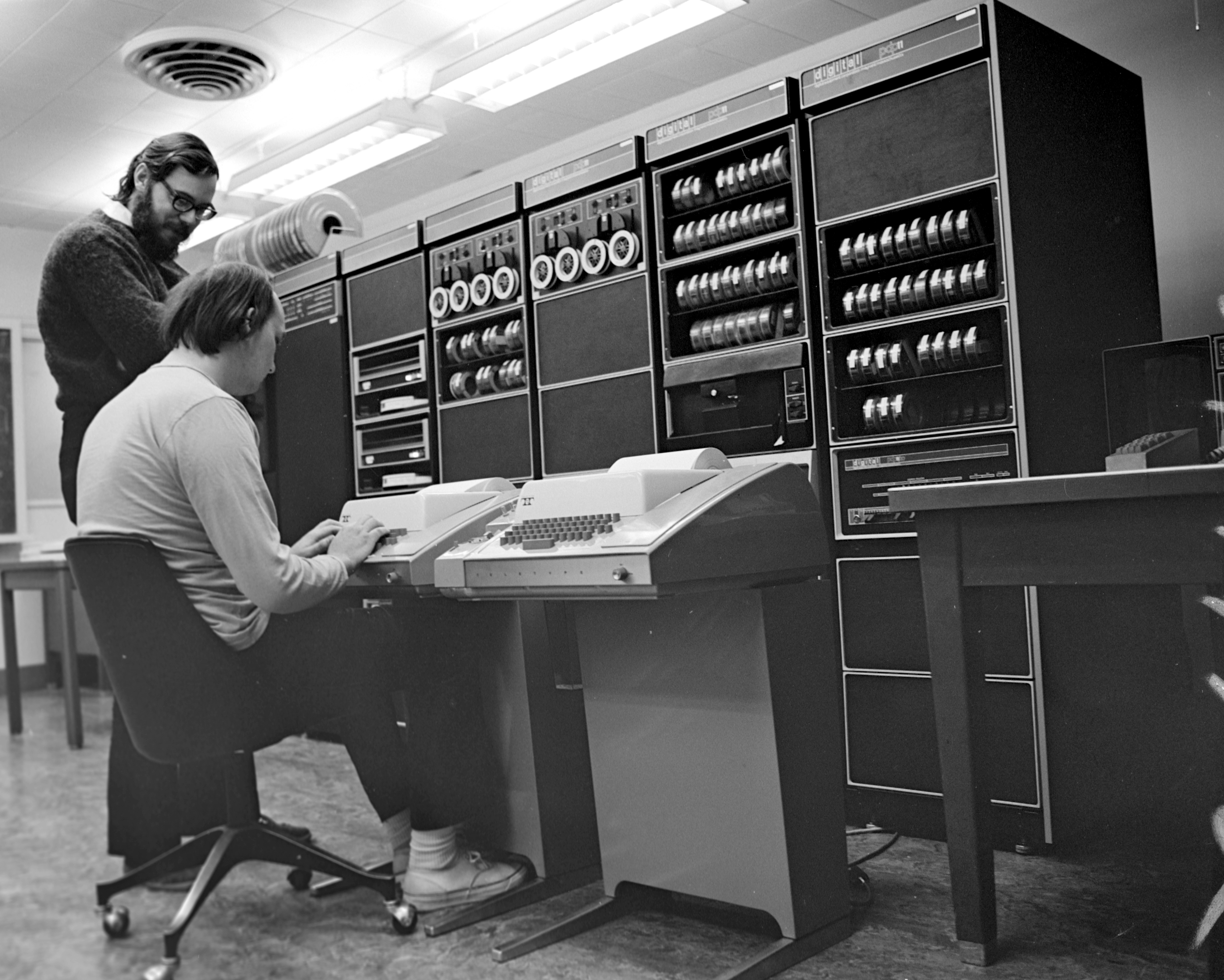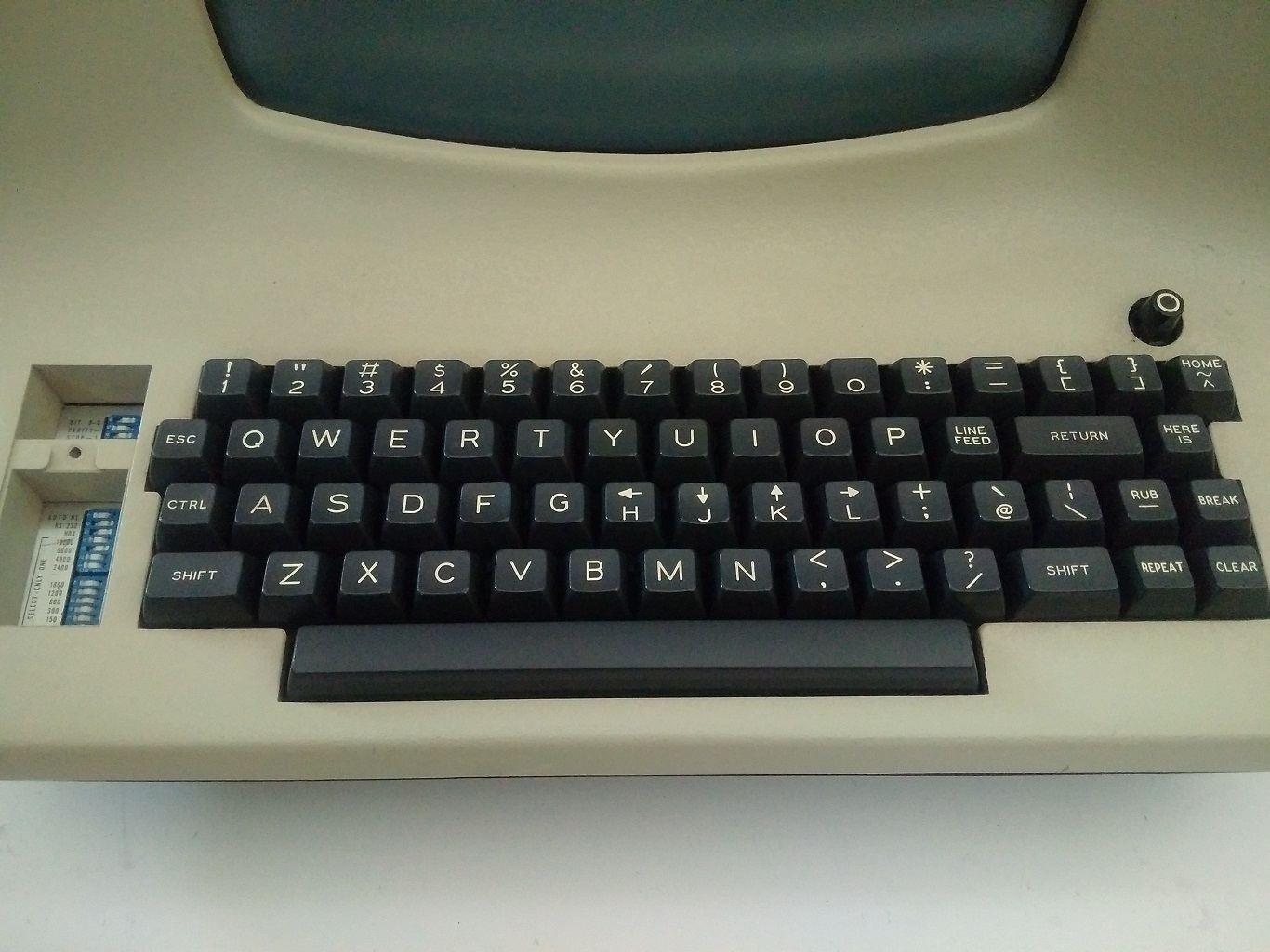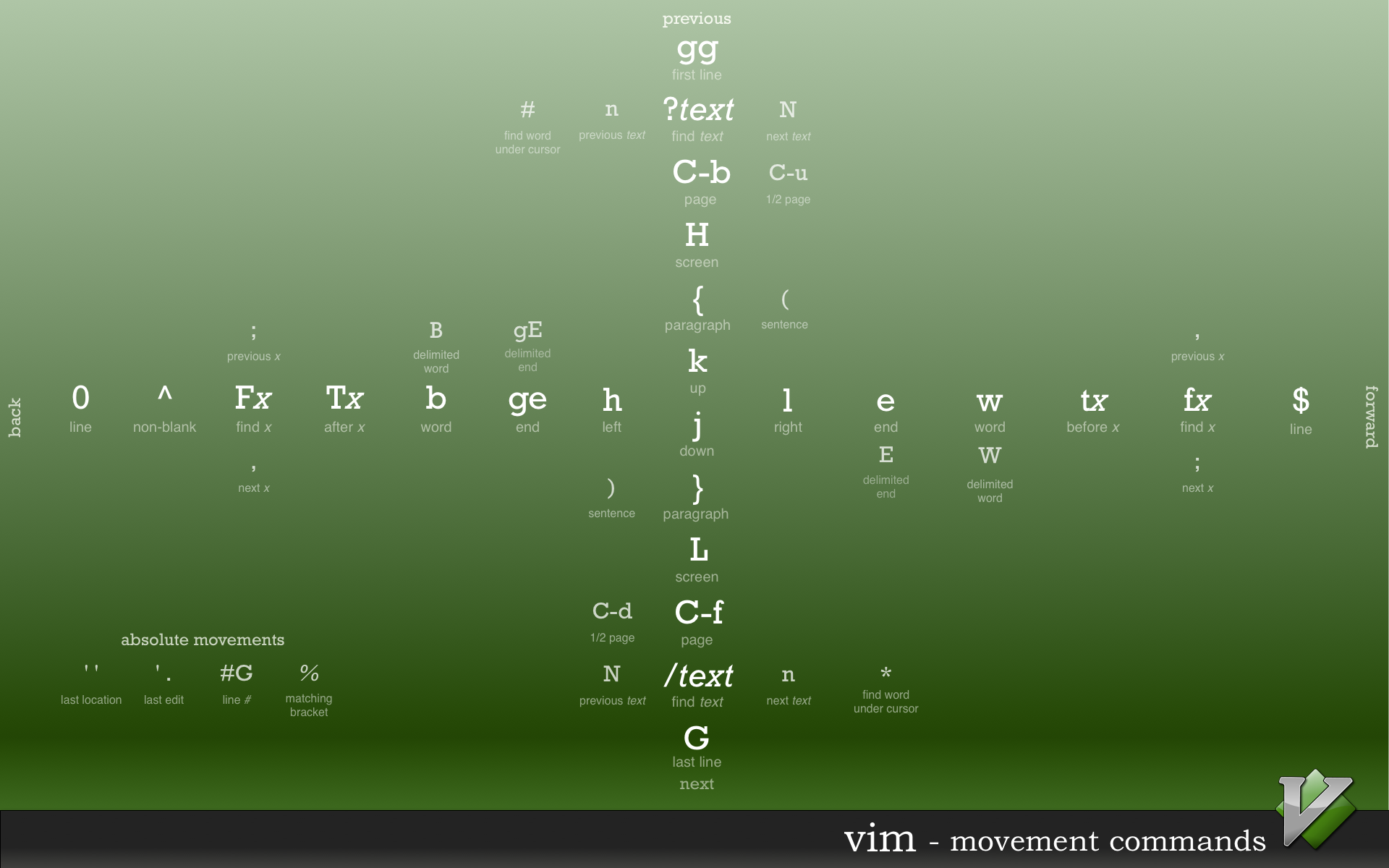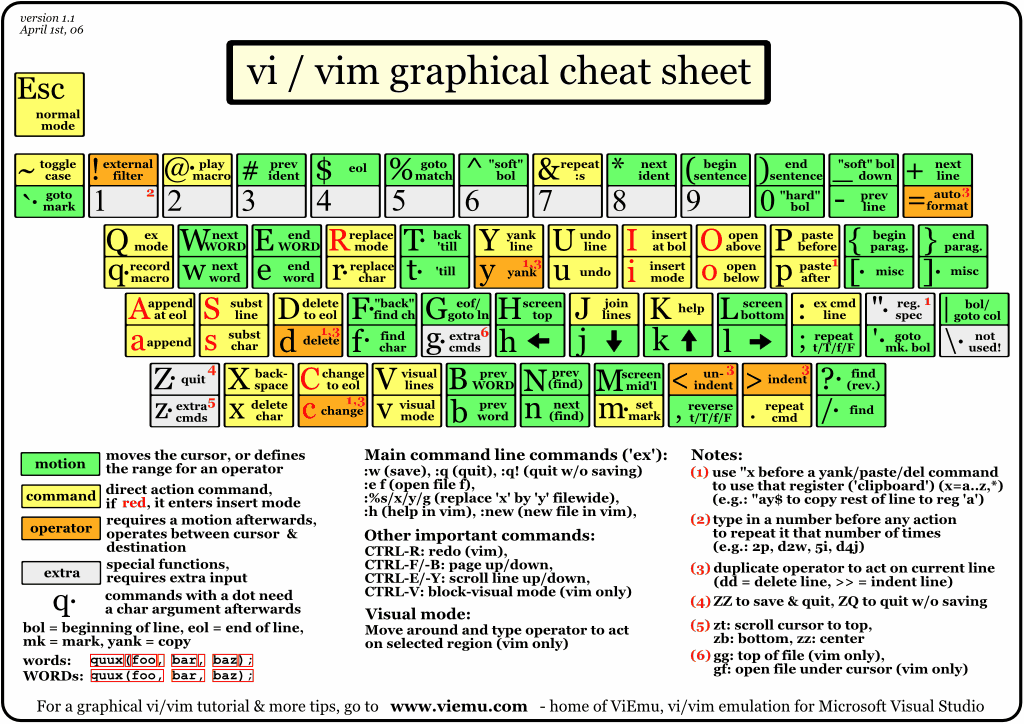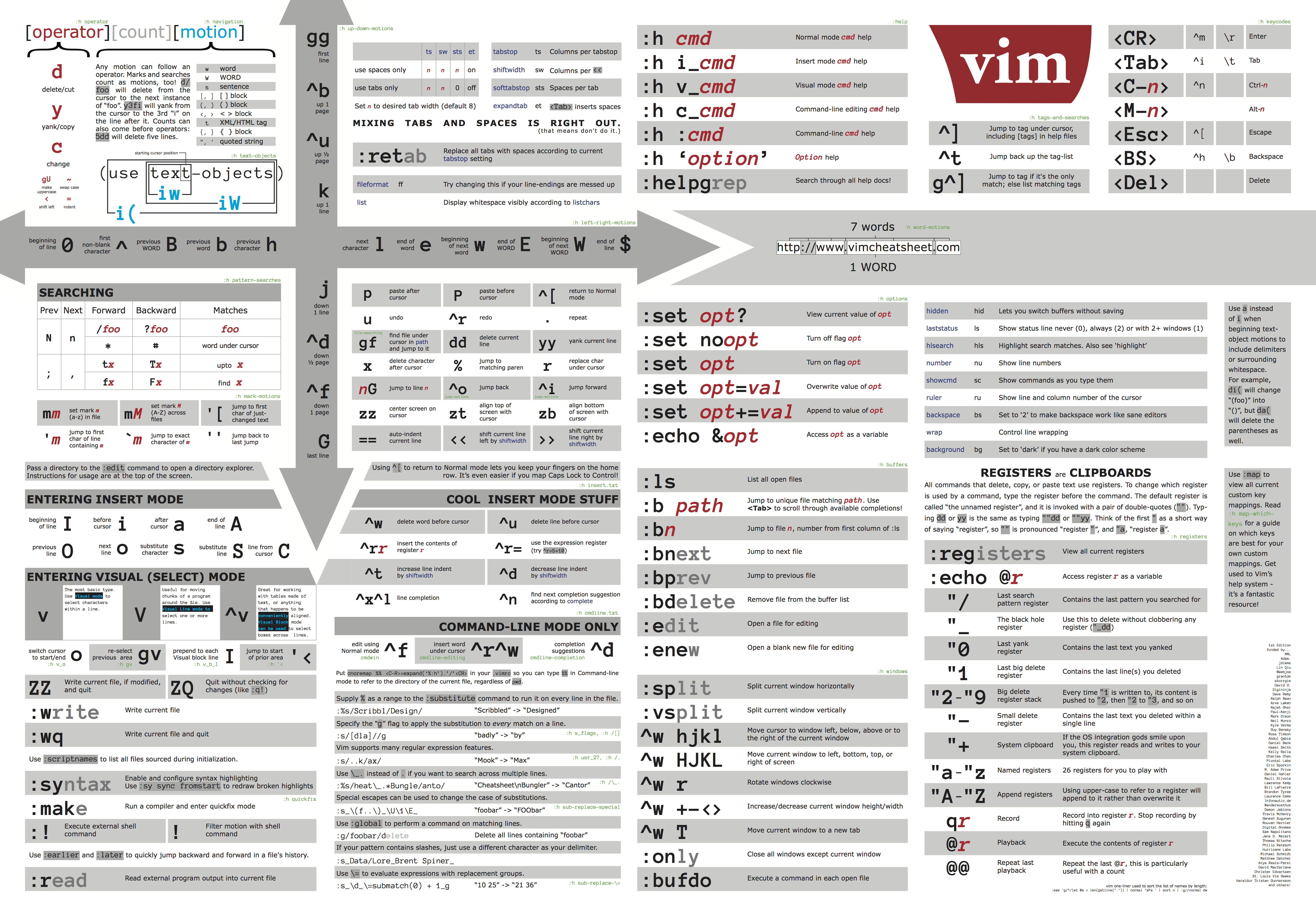- Why this topic
- A brief history of VIM
- Why VIM
- Understanding the philosophy
- How to make VIM your own
- Basic VIM
- Touch on more advanced topics
- Q & A... If time permits
:help write-quit
:q :quit |
quit |
:q! quit! |
force quit |
:qa :quitall |
quit and close all open buffers |
:wq |
write file and quit |
:wq! |
write and quit, if file does not have a name fail and quit |
:x :exit |
write file only if file has been changes and quit |
:xa :xall |
same as :x but run on all open buffers |
:xa! :xall! |
same as :xa but exit even on errors |
:cq :cquit |
quit and return a none 0, helpful on git commit |
|--QED
| |_1965-1966
| |_UC Berkeley
|
|--ed
| |_1969
| |_Bell Labs
| |_Ken Thompson and Dennis Ritchie
|
|--em
| |_"editor for mortals"
| |_1975
| |_Queen Mary’s College, London
| |_George Coulouris
|
|--ex/vi
| |_"extended ed"
| |_1978
| |_UC Berkeley
| |_Bill Joy
| |_Distributed with BSD Unix Version 1.1
|
|--vim
| |_"Vi Imitation" later "Vi Improved"
| |_1988
| |_Bram Moolenaar
|
|--neovim
| |_2014
|
|--vim 8
|_2016
[Where Vim Came From]https://twobithistory.org/2018/08/05/where-vim-came-from.html
- Fast and Lightweight
- More productivity with less typing
- Customizable
- Free
- Portable
- Fun
- Steep learning curve
- Default configurations sucks
- Doesn't have a "modern" look and feel
- System clipboard support is not always easy
| mode | commands |
|---|---|
| normal | <C-[> |
| insert | i I a A o O |
| command | : |
| visual | v V |
“Indeed, the ratio of time spent reading versus writing is well over 10 to 1. We are constantly reading old code as part of the effort to write new code. ...[Therefore,] making it easy to read makes it easier to write.”
― Robert "Uncle Bob" Martin, Clean Code: A Handbook of Agile Software Craftsmanship
(operator)[motion/text-object]
. . .
dw
delete word
. . .
=G
re-indent lines from current position to end of file
$ vimtutor
Opens a quick self guided tour of basic vim commands
. . .
:help {topic}
<C-]> - navigate to tag under cursor
<C-t> - navigate back from tag
- Awesome Vim - https://github.com/akrawchyk/awesome-vim
- Seven habits of effective text editing - https://www.moolenaar.net/habits_2007.pdf
- video tutorials - http://vimcasts.org/
- Vim Galore - https://github.com/mhinz/vim-galore
- Awesome Vim(plugin explorer) https://vimawesome.com
- Vim Adventures(paid after first level) - https://vim-adventures.com/
- Practical Vim Book
:help vimrc
Normally located at macOS/Linux ~/.vimrc for vim or ~/.config/nvim/init.vim for neovim
windows $HOME/_vimrc
To load a different vimrc start vim with the -u flag passing it the file you would like to load
vim -u vimrc
or
vim -u NONE
:w |
write to file |
:e {file} |
open file |
:ls |
list open buffers |
:b{buffer} |
open buffer |
:!{command} |
run system command |
:reg |
view registers |
:help motion.txt
| h | left |
| j | down |
| k | up |
| l | right |
:help motion.txt
A word consists of a sequence of letters, digits and underscores, or a sequence of other non-blank characters, separated with white space (spaces, tabs, ).
A WORD consists of a sequence of non-blank characters, separated with white space. An empty line is also considered to be a WORD.
http://google.com = 5 words or 1 WORD
| w | forward to next word |
| W | forward to next WORD |
| e | forward to end of word |
| E | forward to end of WORD |
| b | backwards to previous word |
| B | backwards to previous WORD |
| ge | backwards to previous end of word |
| gE | backwards to previous end of WORD |
:help motion.txt
Works only on current line
| f{char} | forward to {char} |
| F{char} | backwards to {char} |
| t{char} | forward until {char} |
| T{char} | backwards until {char} |
| ; | repeat last find command is same direction |
| , | repeat last find command is opposite direction |
:help motion.txt
Works on whole file
| /{word} | search forwards for word |
| ?{word} | search backwards for word |
| * | search forwards for word under cursor |
| # | search backwards for word under cursor |
| n | continue search in same direction |
| N | continue search in opposite direction |
:help motion.txt
| {n}G | Goto to line number {n} |
| gg | Goto to first line of file |
| G | Goto to end of file |
| jump down half a page | |
| jump up half a page | |
| scroll page down(forward) 1 full page | |
| scroll page up(back) 1 full page | |
| zz | center buffer on current position |
| H | move cursor to top of screen |
| M | move cursor to middle of screen |
| L | move cursor to bottom of screen |
:help motion.txt
| 0 | to column 0 |
| ^ | to first non-blank char |
| $ | to end of line |
| {n}| | to column number {n} |
| % | to matching bracket |
:help inserting
| i | insert before current position |
| a | append after current position |
| I | insert before first non-blank character on current line |
| A | append after last blank character on current line |
| o | insert line after current position and enter insert mode |
| O | insert line before current position and enter insert mode |
Always use ESC or <C-[> to return to normal mode
:help change.txt
| x | delete character |
| r | replace character |
| ~ | toggle case |
:help operator
| y | yank(copy) text |
| d | delete text |
| c | change text |
| < | un-indent text |
| > | indent text |
| gu | make text lowercase |
| gU | make text uppercase |
:help single-repeat
dot ( . ) repeats the last command
:help text-objects
Move be prepended by a command
Can include:
Braces/parentheses
- ()
- {}
- []
- <>
Quotes and backticks
- "
- '
- `
Tags ->
- t
Words/WORDS/sentances/paragraphs
- w
- W
- s
- p
ci{ -> Change contents in curly brace
dit -> Delete contents in xml/html tag
yaw -> Yank contents around current word including trailing whitespace
| u | undo |
| redo |
:help marks
Marks can be a-z or A-Z
mg -> set mark named g to current position
`g -> goto mark g
'g -> goto the start of the line of mark g
automatic marks
| ` | the cursor position before the last jump |
| [ | the first character of the last yanked or changed text |
| ] | the last character of the last yanked or changed text |
| . | the position where the last change was made |
:help registers
named regisers can be a-z
:registers
to view the list of current registers
To specify a register prepend with "
"oy$
"op
common unnamed registers are
| " | text from the most recent d, c, s, x or y command |
| + | the system clipboard register, is configured |
| 0 | the text from the most recent yank command not stored in another register |
| 1-9 | contains the text from the most recent delete or change command |
| _ | the black hole register used to preserve numbered registers |
| / | the last search register |
| : | the last ex command ran |
:help complex-repeat
q{char} starts recording into registar {char}
press q again to stop recording
macros are stored in the registars

